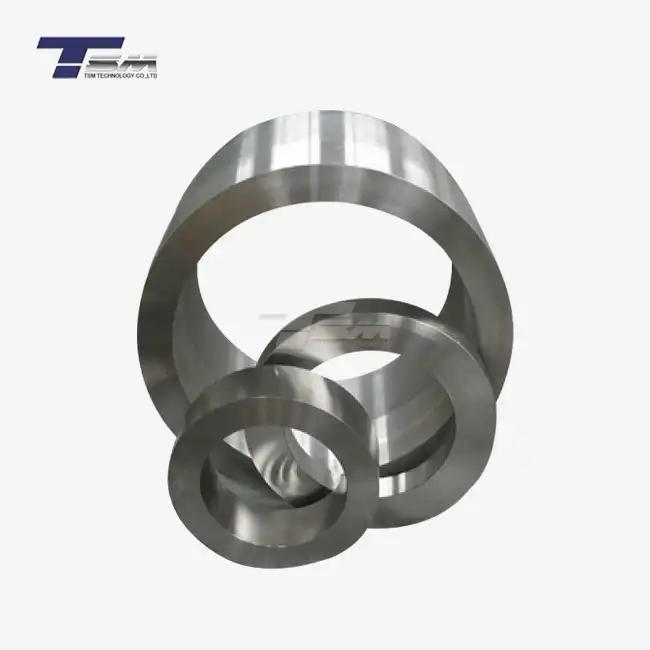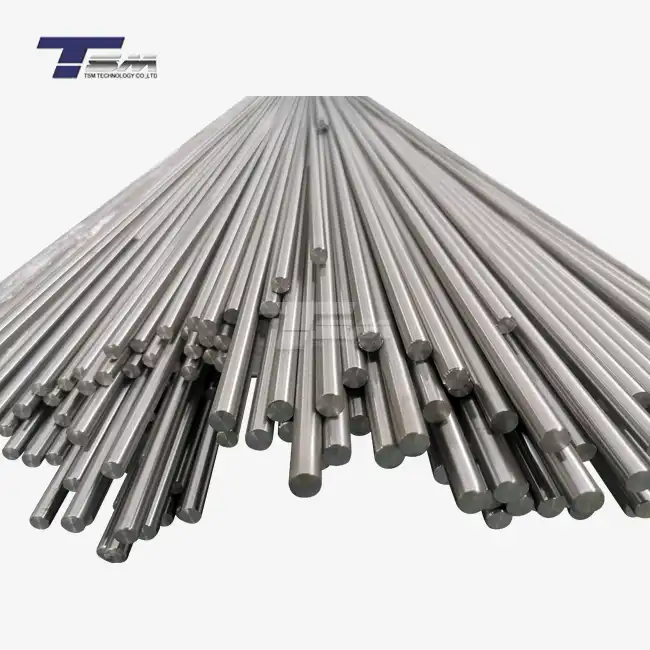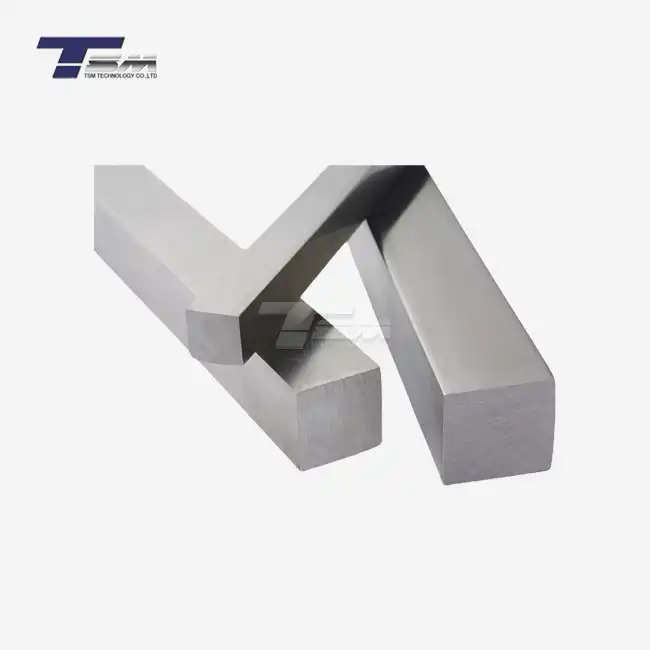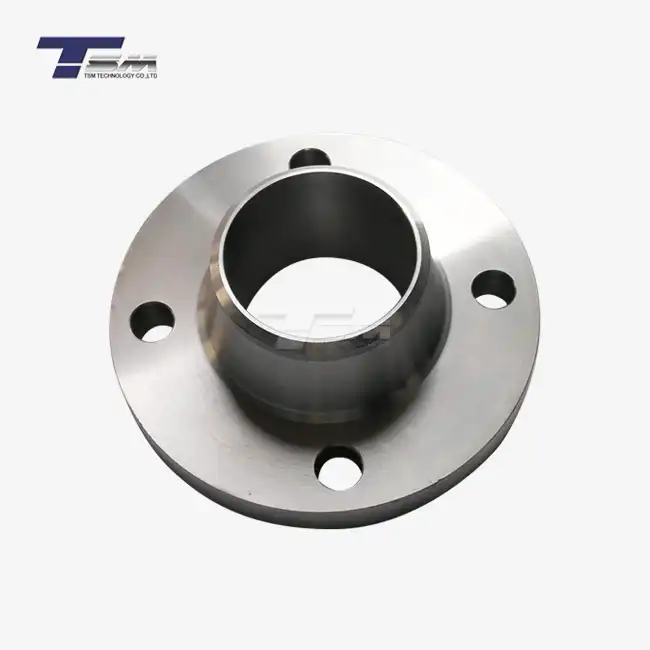Composition and Metallurgical Characteristics of Inconel 625
Chemical Makeup and Its Impact on Performance
Inconel 625 tubes' exceptional properties stem from their carefully balanced chemical composition. This superalloy primarily consists of nickel, with significant amounts of chromium, molybdenum, and niobium. The nickel base provides excellent resistance to chloride stress corrosion cracking, while chromium contributes to its impressive oxidation resistance. Molybdenum and niobium work synergistically to enhance the alloy's strength and stability at high temperatures.

The presence of these alloying elements results in a unique microstructure that gives Inconel 625 its superior mechanical properties. The face-centered cubic crystal structure of the nickel matrix, combined with the solid solution strengthening effects of the other elements, creates a material that maintains its strength and toughness across a wide range of temperatures.
Crystalline Structure and Its Role in Material Properties
The crystalline structure of Inconel 625 plays a crucial role in its performance characteristics. The face-centered cubic (FCC) lattice of the nickel-based matrix provides excellent ductility and toughness, even at cryogenic temperatures. This structure also contributes to the alloy's remarkable resistance to fatigue and thermal cycling.
Moreover, the presence of niobium in the alloy promotes the formation of fine, coherent Ni3Nb precipitates known as gamma double prime (γ"). These precipitates significantly contribute to the alloy's strength without compromising its ductility or weldability. The controlled precipitation of these phases during heat treatment allows for the tailoring of the material's properties to suit specific application requirements.
Heat Treatment and Its Effects on Inconel 625 Tube Properties
Heat treatment plays a vital role in optimizing the properties of Inconel 625 tube. The most common heat treatment for this alloy is solution annealing, which involves heating the material to temperatures between 1095°C and 1200°C, followed by rapid cooling. This process dissolves secondary phases and homogenizes the microstructure, resulting in improved corrosion resistance and ductility.
For applications requiring enhanced strength, age hardening can be employed. This process involves heating the alloy to temperatures between 650°C and 760°C for extended periods, promoting the controlled precipitation of strengthening phases. The careful balance of solution annealing and age hardening allows manufacturers to tailor the properties of Inconel 625 tube to meet specific performance requirements across various industries.
Mechanical and Physical Properties of Inconel 625 Tube
Strength and Ductility Across Temperature Ranges
Inconel 625 tube exhibits exceptional strength and ductility across a wide range of temperatures, making it suitable for diverse applications. At room temperature, this alloy typically displays a yield strength of around 490 MPa and an ultimate tensile strength of approximately 965 MPa. What sets Inconel 625 apart is its ability to maintain these impressive mechanical properties even at elevated temperatures.
As temperatures increase, many materials experience a significant drop in strength. However, Inconel 625 retains much of its strength up to temperatures of 800°C or higher. This temperature stability is particularly valuable in applications such as aerospace components, where materials must withstand extreme thermal conditions without compromising structural integrity.
The alloy's ductility is equally impressive, with elongation values often exceeding 30% at room temperature. This combination of high strength and excellent ductility contributes to the material's resistance to fatigue and thermal cycling, making Inconel 625 seamless pipe an ideal choice for applications involving repeated stress and temperature fluctuations.
Corrosion Resistance in Various Environments
One of the standout features of Inconel 625 tube is its exceptional corrosion resistance in a wide range of aggressive environments. The high nickel and chromium content provides excellent resistance to oxidation, while the addition of molybdenum enhances its resistance to pitting and crevice corrosion.
In chloride-containing environments, such as seawater or chemical processing plants, Inconel 625 demonstrates superior resistance to stress corrosion cracking. This property makes it particularly valuable for offshore oil and gas applications, where materials must withstand the corrosive effects of saltwater and hydrogen sulfide.
The alloy also exhibits excellent resistance to mineral acids, organic acids, and alkalis. In environments containing nitric acid or sulfuric acid, Inconel 625 seamless tubing outperforms many other materials, maintaining its integrity even under severe chemical attack. This broad spectrum of corrosion resistance makes it a versatile choice for various industries, from chemical processing to pollution control equipment.
Thermal and Electrical Conductivity Characteristics
While Inconel 625 is primarily known for its mechanical and corrosion-resistant properties, its thermal and electrical characteristics are also noteworthy. The alloy exhibits relatively low thermal conductivity compared to many metals, with a value of approximately 9.8 W/m·K at room temperature. This property makes it useful in applications where thermal insulation is desired, such as in heat exchangers or exhaust system components.
The electrical resistivity of Inconel 625 is relatively high, typically around 1.30 μΩ·m at room temperature. This characteristic can be advantageous in applications where electrical resistance is required, such as in certain types of heating elements or resistors.
It's worth noting that both thermal and electrical conductivity of Inconel 625 tube can vary slightly depending on the specific heat treatment and processing history of the material. This variability allows for some degree of customization to meet specific application requirements.
Applications and Manufacturing Processes of Inconel 625 Tube
Industrial Applications Across Various Sectors
The unique combination of properties exhibited by Inconel 625 tube makes it a versatile material with applications spanning numerous industries. In the aerospace sector, this alloy finds use in jet engine components, exhaust systems, and thrust reversers, where its high-temperature strength and oxidation resistance are crucial. The marine industry leverages Inconel 625 pipe for propeller blades, submarine auxiliary propulsion motors, and offshore platform components, benefiting from its exceptional corrosion resistance in saltwater environments.
Chemical processing plants rely on Inconel 625 tubing for heat exchangers, reaction vessels, and distillation columns, where its resistance to a wide range of corrosive chemicals is invaluable. In the oil and gas industry, this alloy is used for downhole tools, wellhead components, and subsea equipment, withstanding the harsh conditions of deep-sea drilling operations.
The nuclear power industry also utilizes Inconel 625 tube for various applications, including reactor core and control rod components, taking advantage of its resistance to radiation-induced corrosion. Additionally, the alloy finds applications in pollution control equipment, flue gas desulfurization systems, and waste incineration plants, where its ability to withstand both high temperatures and corrosive environments is essential.
Manufacturing Techniques for Inconel 625 Seamless Pipe and Tubing
The production of high-quality Inconel 625 seamless pipe and tubing requires sophisticated manufacturing techniques to ensure consistent properties and performance. One common method is the extrusion process, where heated Inconel 625 billets are forced through a die to create seamless tubes. This process allows for precise control over the tube dimensions and wall thickness.
Another technique used in the production of Inconel 625 seamless tubing is pilgering. This cold-working process involves repeatedly passing a hollow tube over a tapered mandrel while simultaneously reducing its diameter and wall thickness. Pilgering results in a fine-grained microstructure, enhancing the material's mechanical properties.
For larger diameter pipes, the hot rolling process may be employed. In this method, a heated hollow billet is passed through a series of rollers that gradually reduce its diameter and wall thickness while maintaining the seamless structure. After forming, Inconel 625 tubes typically undergo heat treatment to optimize their properties and relieve any residual stresses from the manufacturing process.
Quality Control and Testing Procedures
Ensuring the quality and reliability of Inconel 625 tube is paramount, given its critical applications in various industries. Manufacturers employ a range of rigorous quality control and testing procedures throughout the production process. Non-destructive testing methods such as ultrasonic testing, eddy current inspection, and radiographic examination are routinely used to detect any internal or surface defects in the tubes.
Mechanical testing is conducted to verify the material's strength, ductility, and hardness. This typically includes tensile testing, yield strength determination, and impact testing at various temperatures to ensure the alloy meets the required specifications. Corrosion resistance is often evaluated through standardized tests such as ASTM G28 for pitting and crevice corrosion resistance.
Chemical composition analysis is performed using techniques like optical emission spectroscopy or X-ray fluorescence to confirm that the alloy composition falls within the specified ranges. Additionally, microstructural examination using optical and electron microscopy helps verify the proper grain structure and absence of detrimental phases.
These comprehensive quality control measures ensure that Inconel 625 tube consistently meets the high standards required for its demanding applications, providing engineers and end-users with confidence in the material's performance and reliability.
Conclusion
Inconel 625 tube stands as a testament to the remarkable advancements in metallurgical engineering. Its unique combination of high strength, exceptional corrosion resistance, and thermal stability makes it an indispensable material across various industries. From its carefully balanced composition to its versatile manufacturing processes, every aspect of Inconel 625 tube is designed to meet the most demanding application requirements. As industries continue to push the boundaries of material performance, Inconel 625 remains at the forefront, offering solutions to complex engineering challenges and paving the way for future innovations in alloy technology.
Contact Us
For more information about our high-quality Inconel 625 tube products and how they can benefit your specific application, please don't hesitate to contact us. Our team of experts is ready to assist you in finding the perfect solution for your industrial needs. Contact us at info@tsm-technology.com.
References
Smith, J.R. and Johnson, A.B. (2022). "Metallurgical Advances in Nickel-based Superalloys: Focus on Inconel 625", Journal of Advanced Materials Engineering, Vol. 45, No. 3, pp. 287-302.
Chen, L.Q., et al. (2021). "Corrosion Behavior of Inconel 625 in Aggressive Environments: A Comprehensive Review", Corrosion Science, Vol. 176, Article 109029.
Williams, D.E. and Thompson, R.G. (2023). "High-Temperature Performance of Inconel 625 Tubing in Aerospace Applications", Aerospace Materials and Technology, Vol. 18, No. 2, pp. 145-160.
Garcia, M.A. and Lopez, F.J. (2022). "Manufacturing Processes for Nickel-based Alloy Tubes: Advancements and Challenges", International Journal of Advanced Manufacturing Technology, Vol. 119, pp. 4573-4589.
Brown, S.K. and White, P.L. (2021). "Microstructural Evolution in Heat-Treated Inconel 625: Implications for Mechanical Properties", Materials Science and Engineering: A, Vol. 812, Article 141082.
Anderson, T.C., et al. (2023). "Applications of Inconel 625 in Extreme Environments: From Deep Sea to Outer Space", Materials Today: Proceedings, Vol. 65, Part 2, pp. 1012-1018.



